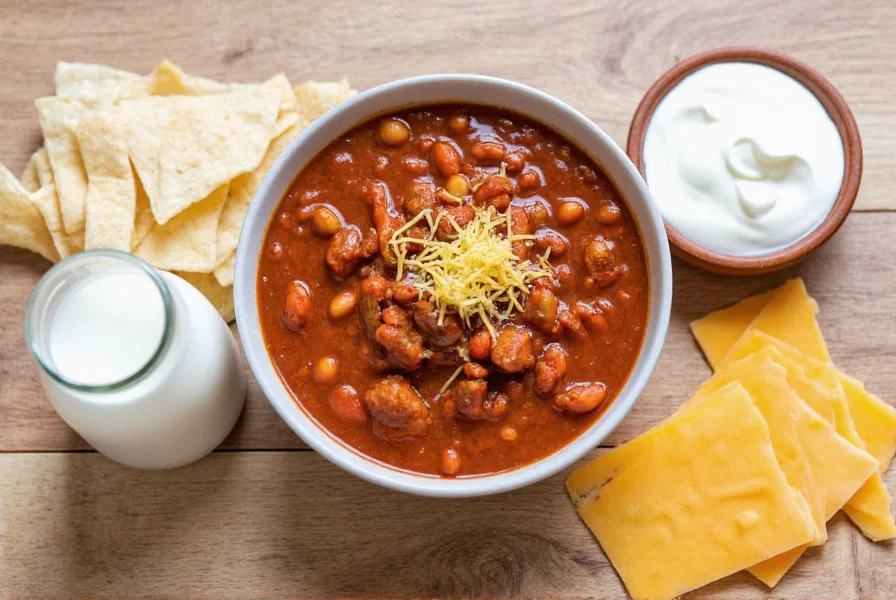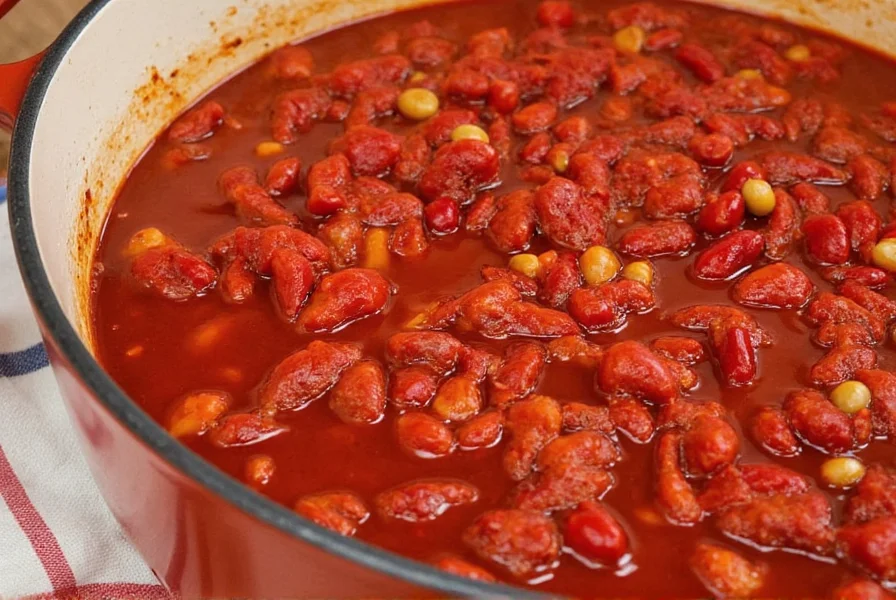When your chili turns out hotter than expected, knowing how to reduce the heat quickly can save your meal. Capsaicin, the compound responsible for chili's burn, is oil-soluble and binds to receptors in your mouth. Understanding this chemistry helps explain why certain remedies work better than others for how to tone down spicy chili.
Why Chili Gets Too Spicy
Chili heat comes primarily from capsaicin in peppers. When you add too many hot peppers or their seeds, the capsaicin concentration overwhelms other flavors. Unlike salt, you can't simply 'cook out' capsaicin—it remains stable through cooking. This explains why many people search for quick fixes for overly spicy chili when they've accidentally made their dish too hot.
Most Effective Methods to Reduce Spiciness
Dairy Solutions (Most Effective)
Dairy contains casein, a protein that breaks capsaicin's bond with pain receptors. This makes it the most scientifically proven method for how to fix chili that's too hot.
- Milk or half-and-half: Stir in 1/4 cup gradually until desired heat level
- Sour cream or Greek yogurt: Adds creaminess while cooling heat (great for topping)
- Cheese: Shredded cheddar or queso fresco melts into chili while reducing heat

Acidic Ingredients (Second Best)
Acids help neutralize pH and can break down some capsaicin. These work well for natural ways to reduce spiciness in chili without adding dairy.
- Lime or lemon juice: Start with 1 tablespoon and adjust to taste
- Vinegar: Apple cider vinegar adds flavor while reducing heat
- Tomato products: Crushed tomatoes or tomato paste dilute heat while enhancing flavor
Sweeteners and Starches
Sugar binds with capsaicin, while starches absorb some of the oily compounds causing the burn—key methods to reduce heat in chili.
- Sugar or honey: 1-2 teaspoons can balance heat without making chili sweet
- Beans or lentils: Add 1/2 cup cooked beans to absorb excess spice
- Potatoes or rice: Dice potatoes and simmer in chili to draw out heat
What NOT to Do When Fixing Spicy Chili
Certain common suggestions actually make spicy food feel hotter:
- Drinking water: Capsaicin is oil-based, so water spreads it rather than neutralizing it
- Adding more hot ingredients: Trying to 'balance' heat with more spice rarely works
- Using alcohol: While it dissolves capsaicin, the burning sensation remains
| Method | Effectiveness | Time Required | Flavor Impact |
|---|---|---|---|
| Dairy (milk, sour cream) | ★★★★★ | Immediate | Creamy, rich |
| Acid (lime juice, vinegar) | ★★★★☆ | 5-10 minutes | Bright, tangy |
| Sugar/honey | ★★★☆☆ | Immediate | Slightly sweet |
| Starches (beans, potatoes) | ★★★☆☆ | 15-20 minutes | Thickens chili |
| Dilution (more ingredients) | ★★☆☆☆ | 20-30 minutes | Changes proportions |
Preventing Overly Spicy Chili Next Time
While knowing what to add to chili to make it less spicy is valuable, prevention is better:
- Remove seeds and membranes from peppers (where most capsaicin resides)
- Add hot ingredients gradually, tasting as you go
- Start with half the recommended amount of hot peppers
- Use milder pepper varieties like Anaheim instead of habaneros
Special Considerations for Dietary Restrictions
For those avoiding dairy, try these dairy alternatives for spicy food relief:
- Coconut milk (adds subtle sweetness)
- Avocado (fat content helps bind capsaicin)
- Nutritional yeast (adds umami without dairy)
Final Tips for Perfect Chili Every Time
When adjusting spice levels, remember:
- Add remedies gradually—you can always add more, but can't remove excess
- Let chili simmer for 10-15 minutes after adjustments for flavors to meld
- Balance with complementary flavors: acid with sweetness, heat with creaminess
- Always taste before serving and offer cooling toppings at the table











 浙公网安备
33010002000092号
浙公网安备
33010002000092号 浙B2-20120091-4
浙B2-20120091-4